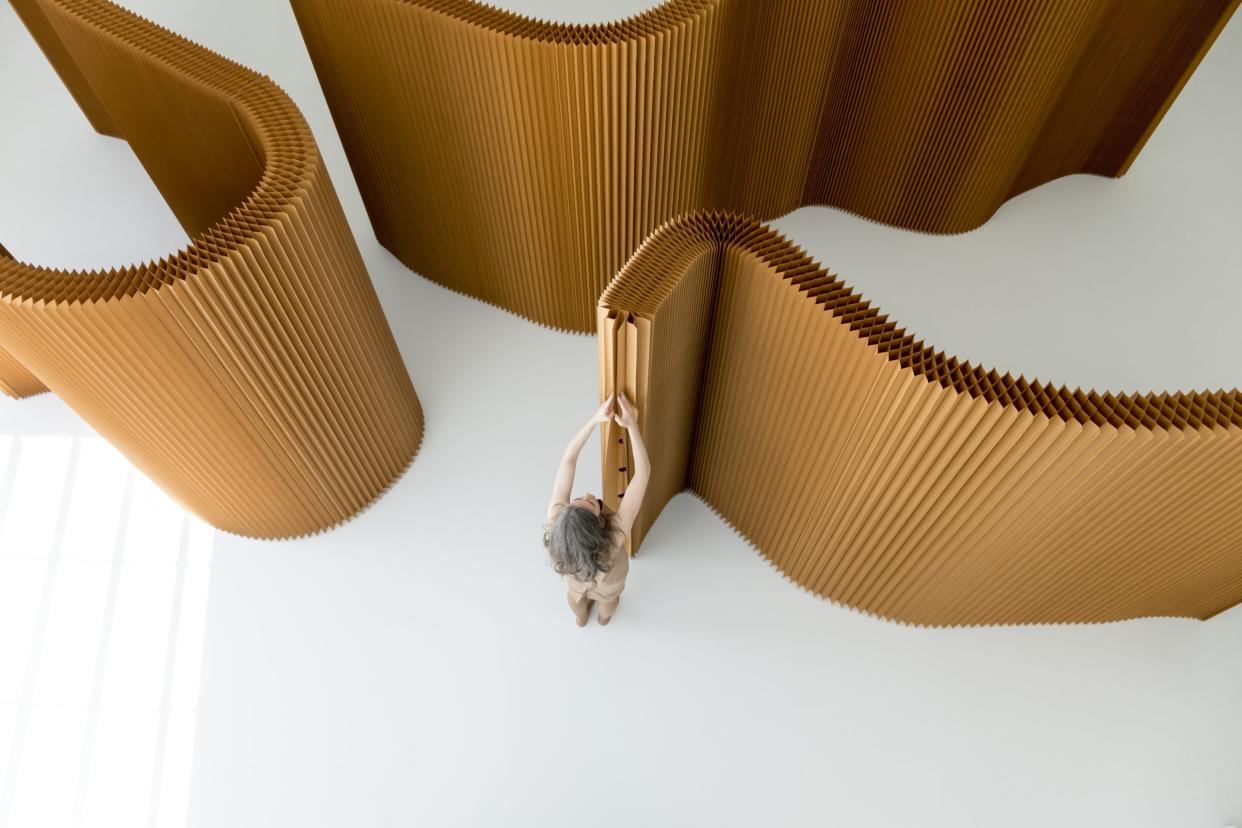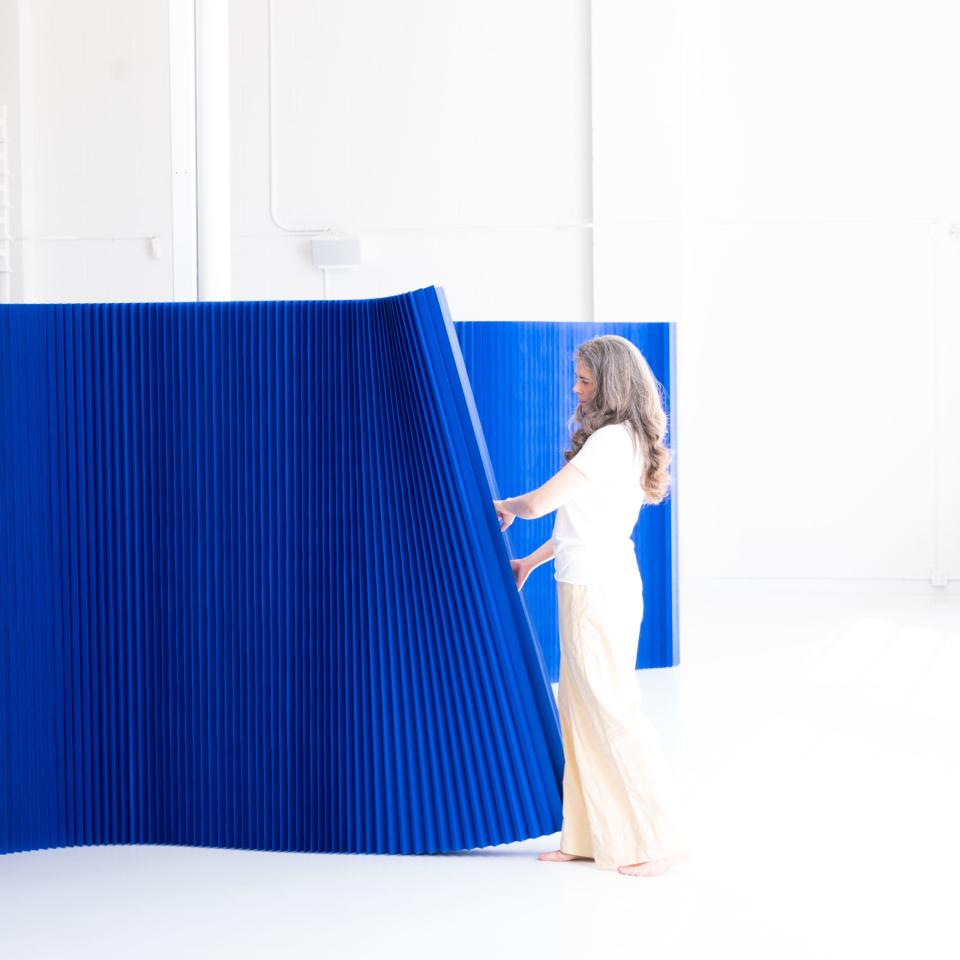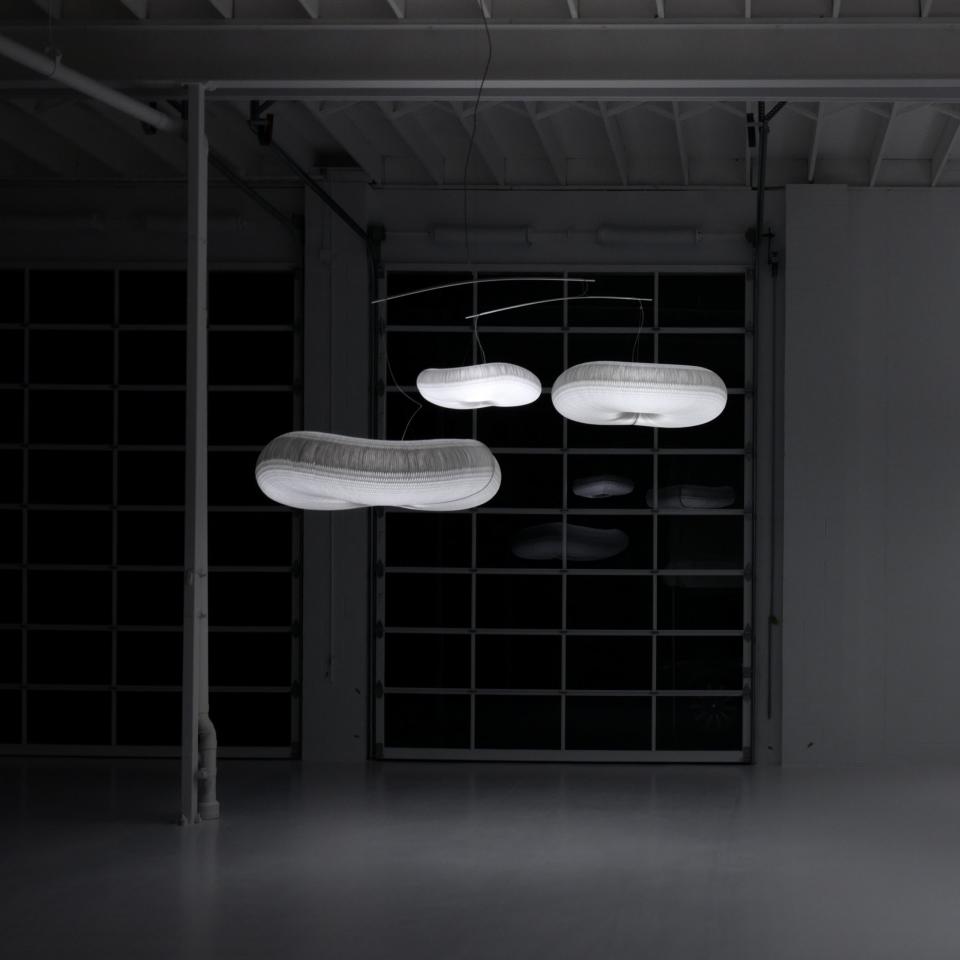These Paper Partitions Create the Adaptable Space We Need Right Now

As recent, money-minded, architecture school graduates in the early 2000s, Stephanie Forsythe and Todd MacAllen inhabited a small live/work studio apartment. In sharing the compact space, the two creatives wanted to achieve some semblance of privacy so one person could sleep while the other worked. They aimed to section off the single-room home yet retain its relative openness—which eventually led the duo to invent their signature partitions.
“We were and still are very interested in how buildings can adapt to change over time. Life is very dynamic and our buildings should be too,” says Stephanie. “We started by making really small, little paper models. We originally thought of the paper as more of a modeling material and that we would eventually transition to a real material as [the design] became something full-sized.”
Instead, Stephanie and Todd decided paper was the answer all along, so they founded molo to produce paper products. The first was a prototype of the paper softwall, which realized their vision to create flexible spaces. The accordion-like partition acted as a room divider that could be arranged in any curved or linear shape, thanks to the layers of paper arrayed in a honeycomb structure. Over 18 years later, the Vancouver-based team is still making a version of this original paper piece, and for good reason: The material and the mission are as relevant as ever.

Molo uses paper that is FSC-certified, which ensures that it’s sourced from environmentally conscious and responsibly managed forests, and 100% new fiber, which offers strength and durability. The adhesives and fire retardant used to construct and protect the products are nontoxic, and the manufacturing process is nearly zero-waste. Though the items are meant to have a long life, the paper is recyclable and biodegradable in the end.
Stephanie and Todd also thoughtfully engineer their inventions to maximize material and minimize environmental impact. “We use design and geometry to make the paper go a really long way,” Stephanie says. “Each softwall expands to 100 times its compressed form to become a 15-foot-long, freestanding wall. Flexible space-making is also a sustainable alternative to the wasteful practices of tearing out drywall and remodeling fixed spaces.”
Along the way, molo added another material to its repertoire: a nonwoven polyethylene textile that is completely recyclable, dust-repellent, tear-resistant, and cleanable with soap and water. These white textile walls are translucent, which enables them to serve as lanterns as well as dividers that can be illuminated with both LED lights and natural light. The paper lighting fixtures, such as the cloud softlight pendant and urchin softlight, add a playful, sculptural element to any room. Paper stools provide a quick seat and compelling texture.

While Stephanie and Todd initially thought the folding partitions would be meaningful just for small spaces, the duo quickly broadened their horizons. According to Stephanie, flexibility and adaptability are helpful at almost any scale. The paper and textile softwalls are commonly used by businesses with open-floor-plan offices, most notably by tech companies in California such as Apple and Google. The fashion industry and theater world have also taken a liking to them. “We really like seeing how the things we make take on a completely new life in different people’s creative hands,” says Stephanie. “The things we make are abstract and adaptable enough that they can really become something quite different depending on how someone is using them.”
In these quarantine days, the partitions have become a residential lifeline. With the sudden need for a work-from-home environment, newly remote professionals have been using the partitions to carve out productive areas away from visual and auditory distractions. The acoustic absorption feature is key, making the dividers great backdrops for conference calls as well. “Now more than ever, we’re all in a bit of uncertainty in understanding how we’re going to be working and living and navigating our spaces,” Stephanie says. A wall that can move anywhere in the house is a solid start.
Originally Appeared on Architectural Digest

